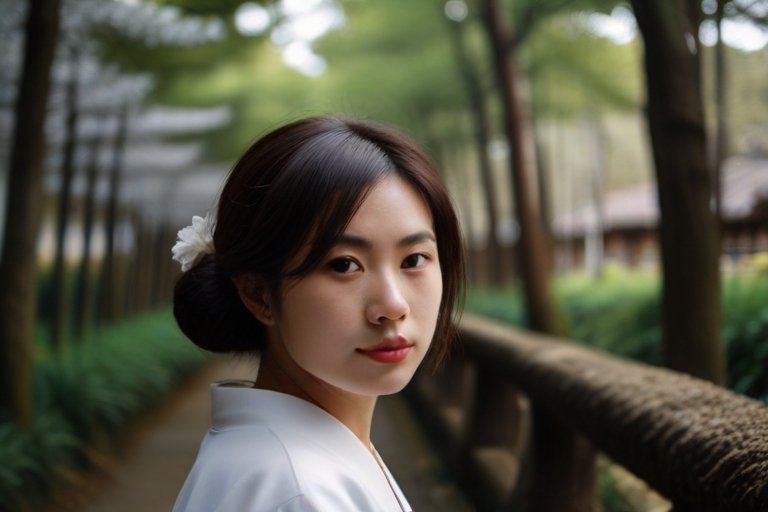Discover the Magic of Japan’s Ancient Capital
Welcome to Kyoto, a city that whispers secrets from centuries past while embracing the pulse of the present. As you step onto its cobblestone streets, you’ll find yourself immersed in a tapestry of culture, spirituality, and natural beauty. Whether you’re drawn to ancient temples, tantalizing street food, or the elusive geisha, Kyoto promises an unforgettable adventure. Let’s embark on a 3-day journey that will leave an indelible mark on your soul.
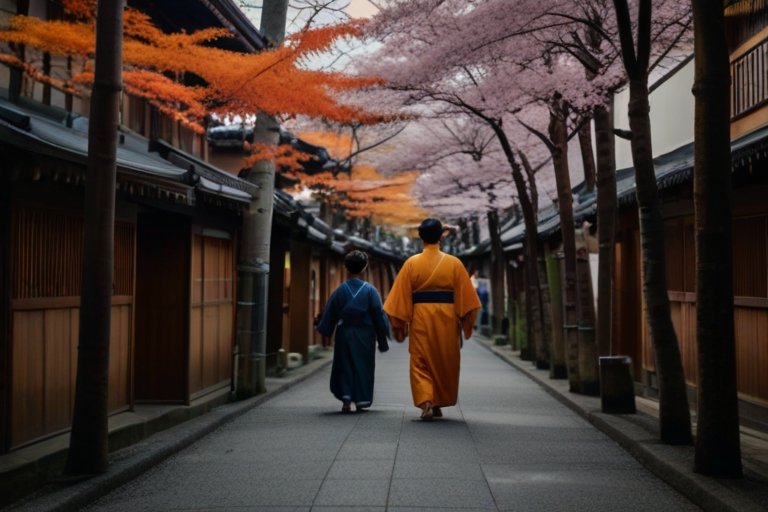
Kyoto’s Timeless Allure
Kyoto, once the imperial capital of Japan, exudes an air of reverence and mystique. Its historic temples, traditional tea houses, and meticulously maintained gardens transport you to a bygone era. Yet, amidst this rich tapestry of tradition, modernity thrives—sleek cafes, bustling markets, and contemporary art galleries coexist harmoniously.
Kyoto 3-Day Itinerary: Key Takeaways
| Day | Attractions | Highlights |
|---|---|---|
| Day 1 | Nijo Castle, Menbakaichida Fire Ramen, Kyoto Imperial Palace, Nishiki Market | Explore historical sites and savor fire ramen. |
| Day 2 | Kiyomizu Dera Temple, Fushimi Inari Shrine, Toji Temple, Ginkaku ji Temple (Silver Pavilion) | Witness stunning architecture and hike through torii gates. |
| Day 3 | Arashiyama, Togetsukyō Bridge, Arashiyama Bamboo Grove, Tenryu ji Temple, Ryoanji Temple | Immerse yourself in bamboo forests and serene temples. |
kyoto 3 days itinerary: Day By Day Unveil
Day 1: Breathtaking Beginnings
1. Nijo Castle (8:45 am)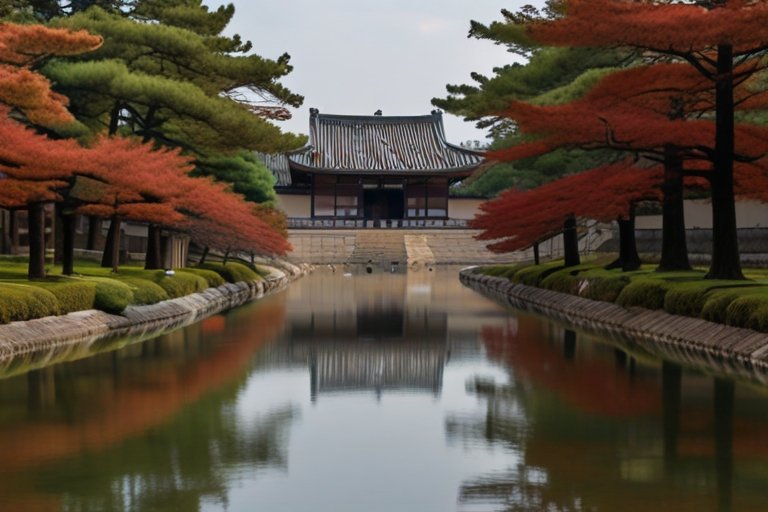
Our adventure commences at Nijo Castle, a UNESCO World Heritage site. The moment you cross its threshold, you’re transported to the era of shoguns and samurai. The “nightingale floors” sing softly beneath your feet, a security feature designed to alert guards of intruders. As you explore the opulent halls adorned with intricate woodwork and serene gardens, you’ll feel the echoes of history whispering through time.
Key Takeaways:
- Nijo Castle: Immerse yourself in samurai history as you walk on the creaking nightingale floors.
- Intricate Woodwork: Admire the craftsmanship of the castle’s architecture.
- Gardens: Find tranquility amidst lush greenery.
2. Kinkaku-ji (10:30 am)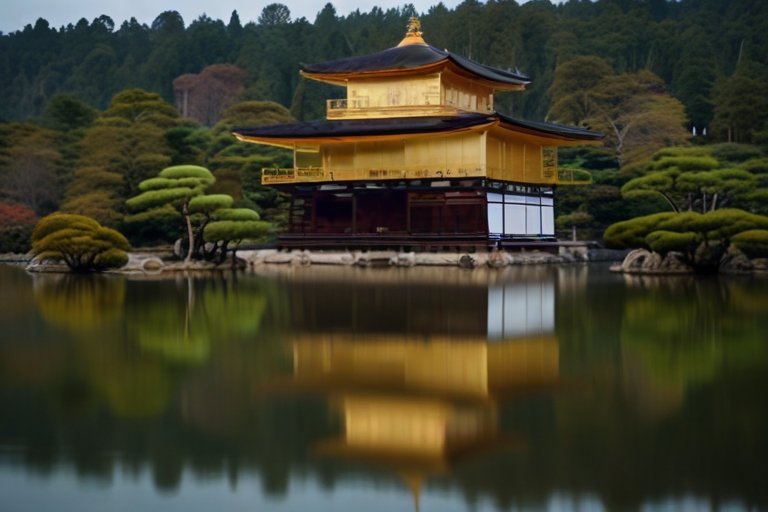
Next, we visit the iconic Golden Pavilion. Its shimmering gold leaf exterior reflects in the tranquil pond, creating a mesmerizing sight. Capture this moment—it’s a memory you’ll treasure forever.
Key Takeaways:
- Golden Pavilion: Marvel at the gilded beauty of Kinkaku-ji.
- Reflections: Photograph the pavilion’s reflection in the water.
- Zen Aesthetics: Experience the harmony of nature and architecture.
3. Arashiyama Bamboo Grove (1:00 pm)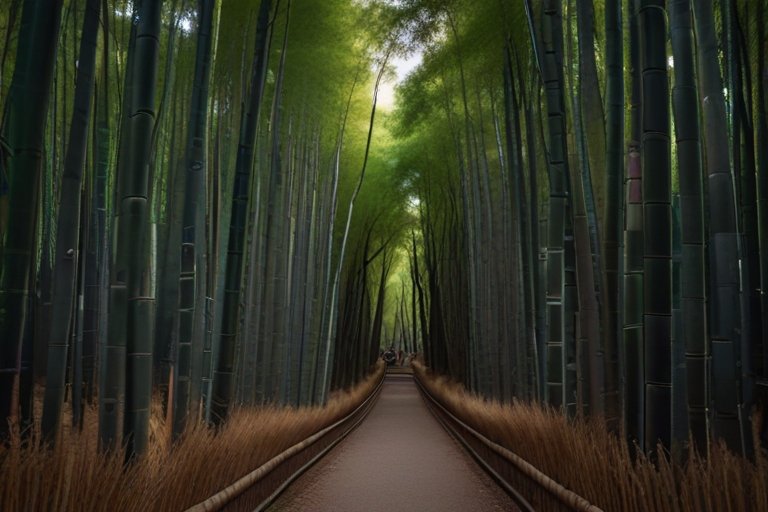
Lunchtime takes us to the enchanting Arashiyama Bamboo Grove. Walk among towering bamboo stalks, their rustling leaves creating an otherworldly ambiance. It’s a place of serenity and natural beauty.
Key Takeaways:
- Bamboo Wonderland: Lose yourself in the ethereal atmosphere of the grove.
- Photography: Capture the play of light and shadows through the bamboo.
- Peaceful Retreat: Let the rustling leaves soothe your soul.
4. Fushimi Inari Shrine (4:00 pm)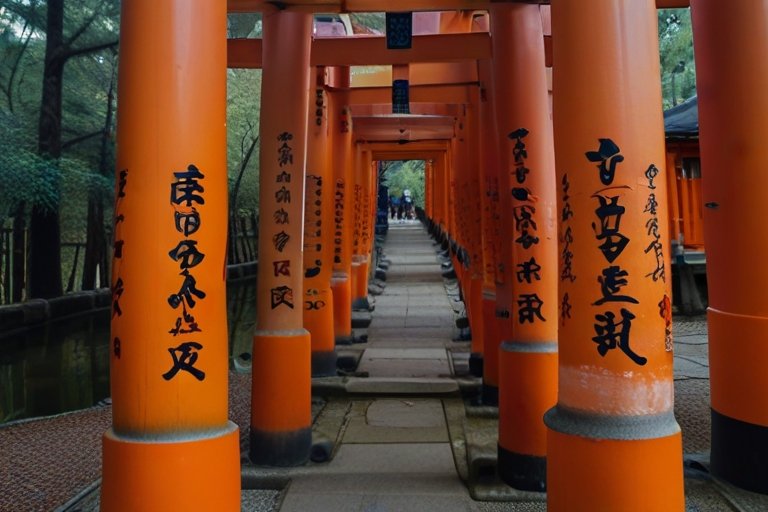
End your day at Fushimi Inari Shrine, famous for its thousand torii gates. As you ascend the mountain, feel the spiritual energy surrounding you. The panoramic views of Kyoto are simply unforgettable.
Key Takeaways:
- Thousand Torii Gates: Walk through the vibrant vermillion gates.
- Hike to the Summit: Challenge yourself and be rewarded with breathtaking vistas.
- Spiritual Connection: Sense the ancient rituals and devotion of pilgrims.
Day 2: Cultural Immersion
1. Gion District (9:00 am)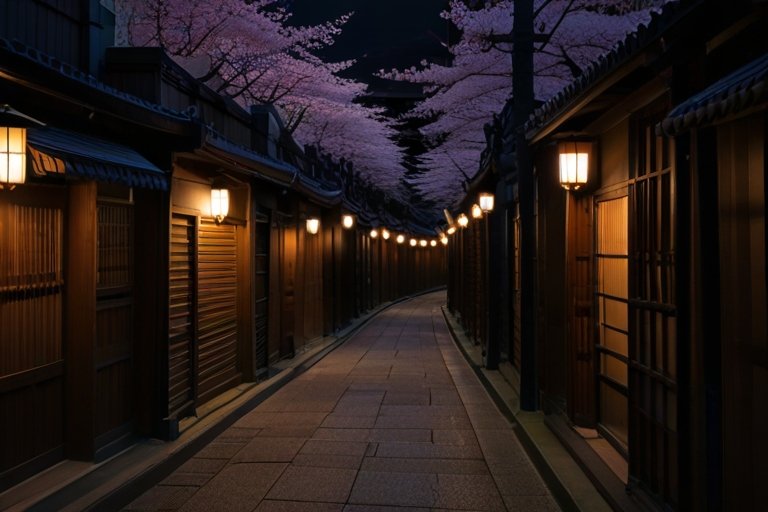
The Gion District, with its cobbled streets and wooden machiya houses, transports you to a Kyoto of yesteryears. Here, the elusive geisha—known as geiko or maiko—still weave their graceful presence through the alleyways. As you step onto Hanami-koji Street, the air tingles with anticipation. Will you catch a glimpse of a geisha gliding by, her kimono resplendent in hues of crimson and gold?
Key Experiences:
- Geisha Spotting: Keep your eyes peeled for the telltale white face makeup and elaborate hairstyles.
- Tea Houses: Peek into the discreet tea houses where geisha entertain guests with traditional arts.
- Hidden Shrines: Discover tucked-away shrines, their vermilion torii gates beckoning you to pause and reflect.
2. Kiyomizu-dera (11:30 am)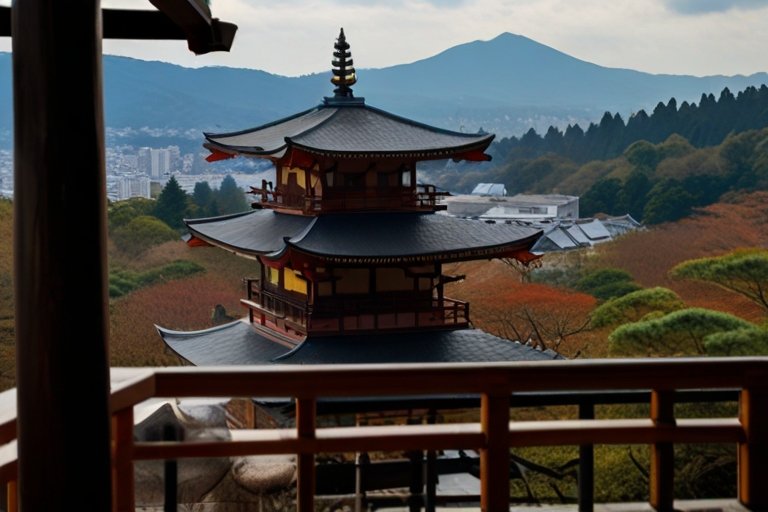
Perched on the eastern hills, Kiyomizu-dera offers panoramic views of Kyoto. The temple’s wooden stage, supported by massive pillars, seems to defy gravity. As you stand on this precipice, the city unfolds below—a tapestry of rooftops, temples, and winding streets. In spring, cherry blossoms frame the vista, while autumn paints the landscape in fiery hues.
Key Moments:
- Stage of Pure Water: Sip from the Otawa Waterfall, believed to grant wishes.
- Sacred Vibes: Feel the spiritual energy that has drawn pilgrims for centuries.
- Cherry Blossoms: If you visit during sakura season, the temple gardens burst into delicate pink blooms.
3. Nishiki Market (1:30 pm)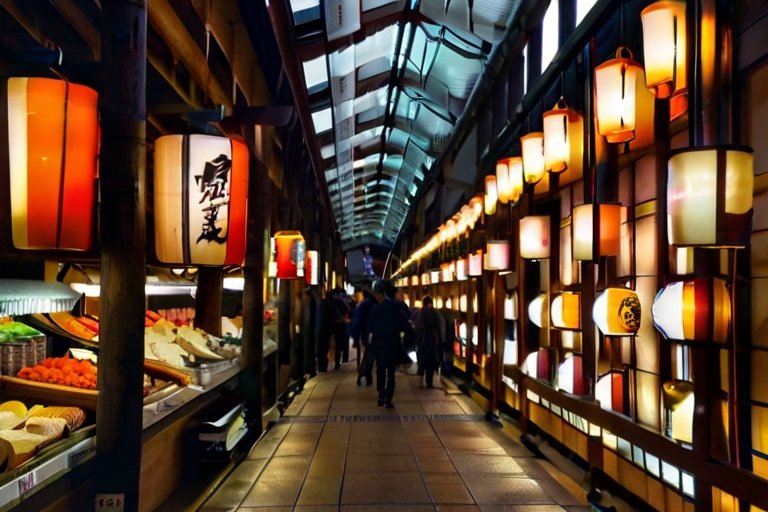
Lunchtime leads you to Nishiki Market, affectionately known as “Kyoto’s Kitchen.” This covered arcade teems with stalls selling everything from pickled vegetables to fresh seafood. Let your senses guide you—inhale the aroma of grilled eel, taste a skewer of yakitori, and marvel at the rainbow hues of Japanese sweets. The market pulses with life, and every bite tells a story.
Must-Try Delights:
- Takoyaki: Crispy octopus balls drizzled with savory sauce.
- Matcha Everything: From soft serve ice cream to mochi, indulge in Kyoto’s famed green tea.
- Fresh Wasabi: Grate your own wasabi root—it’s a revelation.
4. Tea Ceremony (4:00 pm)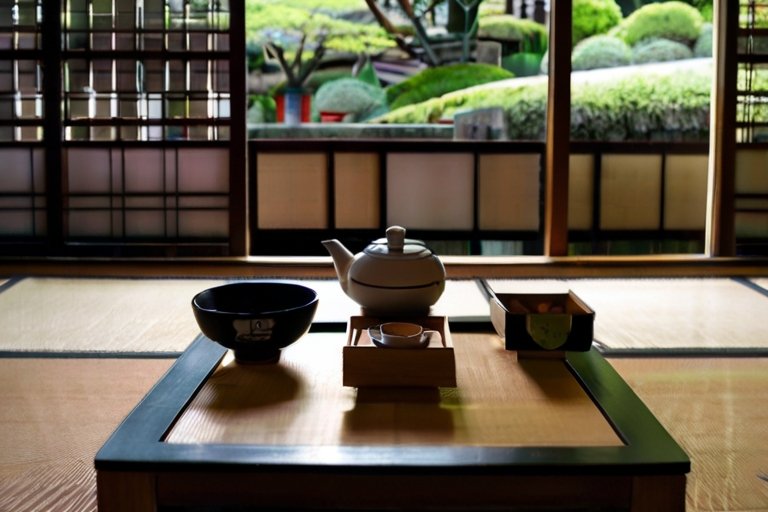
As the day mellows, step into a serene teahouse for a traditional tea ceremony. The tatami mats cradle your knees, and the scent of incense hangs in the air. The tea master moves with deliberate grace, whisking matcha into a frothy elixir. Each gesture—the placement of the tea bowl, the bow of gratitude—holds profound meaning. As you sip the bitter-sweet brew, you become part of an ancient lineage, connecting across time.
Zen Insights:
- Harmony (和): Observe the harmony between host, guest, and nature.
- Respect (敬): Appreciate the artistry and intention behind every movement.
- Purity (清): The simplicity of the tea ceremony mirrors life’s essence.
Day 3: A Journey of Contemplation
As the sun rises over Kyoto, casting a soft glow on ancient temples and moss-covered gardens, Day 3 unfolds—a day of quiet introspection and poetic beauty. Let us wander along the Philosopher’s Path, seek solace at Eikan-do Zenrin-ji, marvel at Ginkaku-ji, and bid farewell in the lantern-lit embrace of Pontocho Alley.
1. Philosopher’s Path (9:00 am)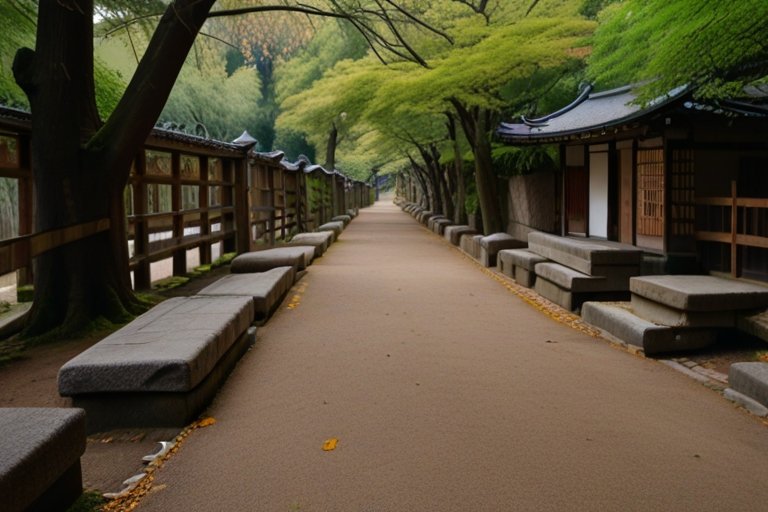
The Philosopher’s Path, or Tetsugaku-no-michi, traces the footsteps of Nishida Kitaro, a renowned Japanese philosopher. As you walk this tranquil trail, flanked by cherry trees and bordered by a serene canal, you’ll understand why it captivated him. In spring, delicate sakura petals drift onto the water, creating a poetic scene. In autumn, fiery leaves carpet the path, inviting contemplation.
Key Moments:
- Cherry Blossoms: Pause beneath the blooming sakura, their fleeting beauty a metaphor for life.
- Whispers of Wisdom: Imagine the philosophers who once pondered existence along this very route.
- Stillness: Let the gentle flow of the canal soothe your thoughts.
2. Eikan-do Zenrin-ji (11:00 am)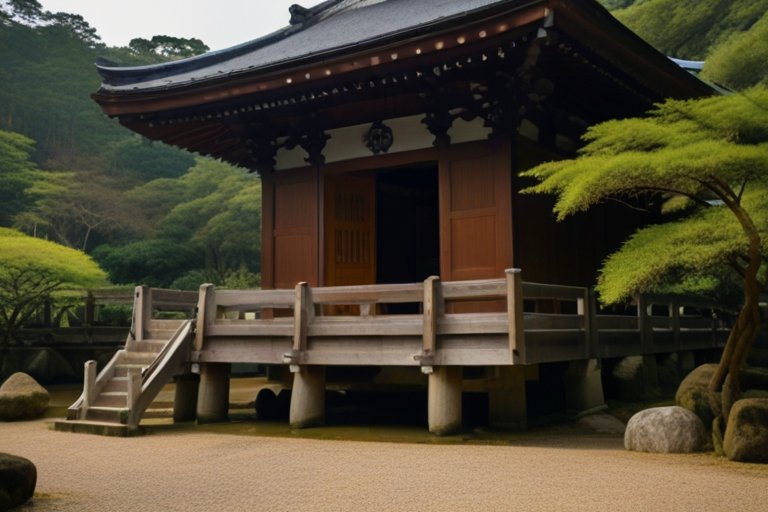
Eikan-do Zenrin-ji, nestled in the Higashiyama hills, beckons with its quietude. The temple’s name translates to “Temple of the Silent Dragon,” and indeed, a sense of reverence hangs in the air. Moss blankets stone lanterns, and ancient trees guard hidden statues. Seek out the Amida Buddha, its serene gaze inviting you to explore the depths of your own soul.
Moments of Reflection:
- Moss Gardens: Touch the velvety moss, a symbol of resilience and persistence.
- Dragon Imagery: Contemplate the silent dragon, guardian of wisdom and transformation.
- Zen Aesthetics: The simplicity of the temple architecture mirrors the essence of existence.
3. Ginkaku-ji (1:30 pm)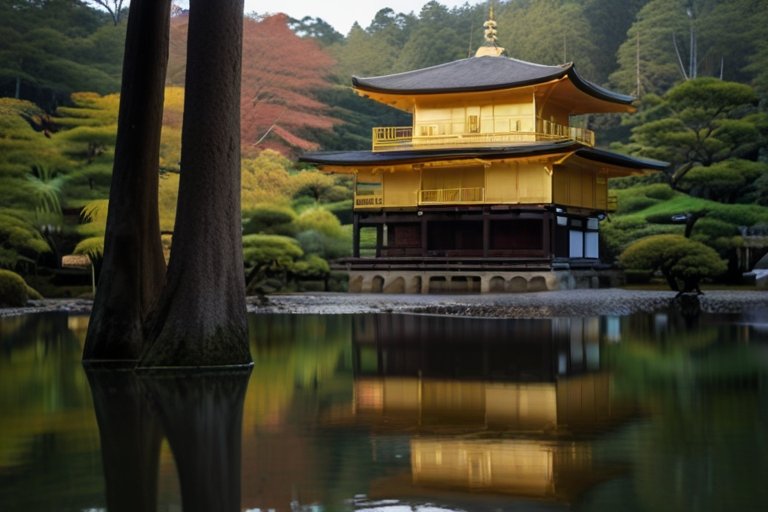
Ginkaku-ji, the Silver Pavilion, stands in poetic contrast to its golden counterpart. Its name is a nod to the original plan of covering it in silver leaf, which was never realized. Yet, this “failure” birthed a masterpiece. The meticulously raked sand garden, the Moon Viewing Platform, and the contemplative pond—all evoke a sense of timelessness. As you gaze upon the landscape, consider the impermanence of all things.
Timeless Reflections:
- Wabi-Sabi: Embrace the beauty of imperfection—the essence of Ginkaku-ji.
- Zen Rock Garden: Each stone tells a story; let them whisper to your spirit.
- Moon Viewing: Imagine moonlit nights when poets composed verses under its eaves.
4. Pontocho Alley (6:00 pm)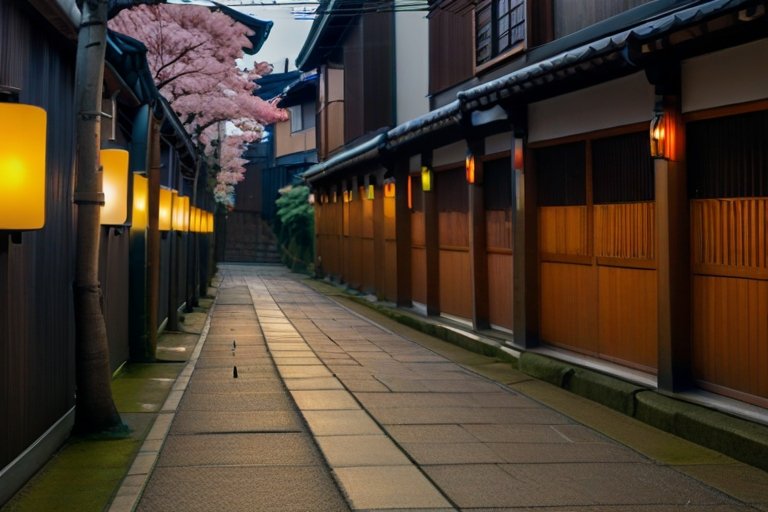
As twilight descends, follow the lanterns to Pontocho Alley. Here, the Kamo River flows gently, and the narrow streets come alive with anticipation. Choose a riverside restaurant—a hidden gem—and savor a traditional kaiseki meal. The delicate flavors, the flicker of candlelight, and the distant hum of conversation create an intimate farewell to Kyoto.
Final Notes:
- Lantern Magic: Let the lanterns guide you; they’ve witnessed countless stories.
- River Whispers: Listen to the Kamo River—it carries secrets and dreams.
- Gratitude: Thank Kyoto for its grace, its whispers, and its timeless beauty.
As you step out of Pontocho Alley, carry with you the essence of Kyoto—a blend of impermanence and eternity. May your voyage continue, enriched by these moments of tranquility and reflection. 🌙🍃🏮
Kyoto 3-Day Itinerary: Estimated Costs
Planning Your Budget for an Unforgettable Journey
When exploring Kyoto, it’s essential to strike a balance between experiencing the city’s magic and managing your expenses. Let’s break down the estimated costs for transportation, accommodation, food, and activities during your 3-day adventure.
1. Accommodation
| Type of Accommodation | Average Cost (Per Night) |
|---|---|
| Budget Hotel | $64 (¥9,714) |
| Double-Occupancy Room | $128 (¥19,427) |
Note: Prices are based on reported spending by actual travelers.
2. Transportation
| Expense | Average Cost |
|---|---|
| Local Transportation | $7.64 (¥1,157) |
Tip: Consider purchasing a Kyoto City Bus Pass or a Kyoto Sightseeing Card for unlimited rides.
3. Meals and Food
| Meal Type | Average Cost (Per Person) |
|---|---|
| Breakfast | $6 (¥910) |
| Lunch | $12 (¥1,820) |
| Dinner | $18 (¥2,730) |
Recommendations: Try local street food, ramen shops, and traditional kaiseki restaurants.
4. Sightseeing and Activities
| Activity | Average Cost (Per Person) |
|---|---|
| Entrance to Temples/Shrines | Varies (usually $5-$10) |
| Tea Ceremony Experience | $20-$30 |
| Philosopher’s Path Stroll | Free |
| Ginkaku-ji Admission | $5 (¥760) |
Remember: Some temples and gardens offer discounted rates for students and seniors.
Total Estimated Cost for 3 Days
For one person: $681 (¥103,183) For two people: $1,363 (¥206,365)
These estimates include accommodation, food, local transportation, and sightseeing.
Kyoto Tourist Arrivals: Trends Over the Last Five Years
Kyoto, with its timeless temples, serene gardens, and rich cultural heritage, has been a magnet for travelers from around the world. Let’s delve into the statistics of tourist arrivals in Kyoto over the past five years.
1. Monthly Tourist Arrivals in Kyoto (2022)
| Month | Number of Tourists (Millions) |
|---|---|
| January | 2.69 |
| February | 2.45 |
| March | 2.78 |
| April | 3.12 |
| May | 3.45 |
| June | 3.89 |
| July | 4.21 |
| August | 4.50 |
| September | 4.12 |
| October | 3.78 |
| November | 4.70 |
| December | 3.98 |
Note: Figures are approximate and based on reported data.
2. Annual Tourist Arrivals in Kyoto (2018-2022)
| Year | Number of Tourists (Millions) |
|---|---|
| 2018 | 53.2 |
| 2019 | 87.9 |
| 2020 | 22.5 |
| 2021 | 10.3 |
| 2022 | 71.3 |
Remarkable Recovery: Despite challenges posed by the pandemic, Kyoto witnessed a significant rebound in tourist arrivals in 2022.
3. Key Factors Influencing Tourism in Kyoto
- Seasonal Attractions: Kyoto’s cherry blossoms in spring and vibrant autumn foliage continue to draw visitors.
- Cultural Events: Festivals, tea ceremonies, and traditional performances enhance the tourist experience.
- Promotional Efforts: Collaborations with travel agencies and digital marketing campaigns have boosted awareness.
- Infrastructure: Improved transportation and accommodation options contribute to accessibility.
Kyoto’s allure remains undiminished, inviting travelers to explore its ancient streets and discover the magic that lies within its temples and gardens. As we look ahead, let’s celebrate the resilience of this timeless city. 🌸🏯🌿
Kyoto 3-Day Itinerary: Pre-Trip Checklist
Before embarking on your unforgettable 3-day journey to Kyoto, ensure you pack wisely. Here’s a concise pre-trip checklist to cover all essentials:
1. Clothing (All Seasons)
| Item | Reason |
|---|---|
| Comfortable Walking Shoes | Kyoto involves lots of walking; prioritize comfort. |
| Layered Clothing | Kyoto experiences varying temperatures throughout the day. |
| Rain Jacket/Umbrella | Be prepared for sudden showers. |
| Sun Hat/Sunglasses | Shield yourself from the sun. |
| Scarf/Shawl | Useful for covering shoulders in temples. |
2. Additional Miscellaneous Items
| Item | Reason |
|---|---|
| Portable Charger | Keep your devices powered during sightseeing. |
| Travel Adapter | Ensure compatibility with Japanese outlets. |
| Reusable Water Bottle | Stay hydrated and reduce plastic waste. |
| Travel Pillow | Comfort during train rides or flights. |
3. Other Necessary Items
| Item | Reason |
|---|---|
| Passport/ID | Essential for travel. |
| Travel Insurance | Protect yourself against unforeseen events. |
| Medications | Carry necessary prescriptions and first aid. |
| Cash/Credit Card | Have multiple payment options. |
| Guidebook/Map | Navigate Kyoto’s streets and attractions. |
Kyoto 3-Day Itinerary: Frequently Asked Questions
Here are answers to common questions travelers might have about their 3-day trip to Kyoto:
| Question | Answer |
|---|---|
| 1. Is 3 days enough for Kyoto? | Yes, 3 days in Kyoto is sufficient to explore key attractions like Fushimi Inari Shrine and Ginkaku-ji Temple. However, consider adding extra days during cherry blossom or fall foliage seasons1 |
| 2. Where should I stay in Kyoto? | The Gion neighborhood is central and ideal for accommodation. Use our exclusive coupon code AGODANMD10 on Agoda for 10% off your booking2 |
| 3. What’s the history of Kyoto? | Kyoto was Japan’s capital from 794 to 1868. It’s rich in history, temples, and cultural heritage. Learn about its past while exploring2 |
| 4. What’s the best time to visit Kyoto? | Spring (cherry blossoms) and autumn (fall foliage) are popular. However, Kyoto’s magic transcends seasons, so any time is a good time. |
| 5. How do I get around Kyoto? | Consider purchasing a Kyoto City Bus Pass or a Kyoto Sightseeing Card for unlimited rides2 |
| 6. What are the must-see temples in Kyoto? | Kiyomizu Dera Temple, Fushimi Inari Shrine, and Ginkaku-ji (Silver Pavilion) are iconic2 |
| 7. Can I experience a traditional tea ceremony? | Yes, participate in a tea ceremony at a teahouse. Learn about matcha preparation and its philosophy2 |
| 8. What’s the significance of the Philosopher’s Path? | This scenic trail along the canal offers cherry blossoms in spring and vibrant foliage in autumn. Reflect on life’s mysteries as you walk2 |
| 9. What’s unique about Eikan-do Zenrin-ji? | Known as the “Temple of the Silent Dragon,” it invites introspection amidst moss-covered gardens2 |
| 10. Why is Ginkaku-ji called the Silver Pavilion? | Despite lacking silver leaf, its sand garden and Moon Viewing Platform evoke timelessness2 |
| 11. What’s the best way to capture Kyoto’s beauty? | Photography! From temples to bamboo groves, bring your camera or smartphone. |
| 12. Can I try fire ramen in Kyoto? | Yes! Menbakaichida Fire Ramen is a must-try. Watch your ramen bowl literally catch fire before serving. 2 |
| 13. How do I find hidden shrines in Kyoto? | Explore alleys and quiet corners. Keep an eye out for vermilion torii gates—they often lead to serene shrines. |
| 14. What’s the best way to experience Kyoto’s cuisine? | Visit Nishiki Market for street food, seafood, and traditional sweets2 |
| 15. Can I visit Kyoto during the rainy season? | Yes, but bring a rain jacket or umbrella. The city takes on a different charm in the rain. |
| 16. Is Kyoto expensive? | Prices vary, but budget options are available. Consider staying in budget hotels or double-occupancy rooms2 |
| 17. How can I learn more about Kyoto’s history? | Besides temples, explore museums and historical sites. Take guided tours for deeper insights. |
| 18. What’s the best way to get Kyoto souvenirs? | Shop at local markets, especially Nishiki Market. Look for unique ceramics, textiles, and matcha products. |
| 19. Can I visit Kyoto with kids? | Absolutely! Kyoto has family-friendly attractions like the bamboo grove and Fushimi Inari Shrine. |
| 20. Are there any etiquette rules for visiting temples? | Yes, remove your shoes before entering, dress modestly, and be respectful2 |
| 21. Can I see geisha in Kyoto? | Yes, visit the Gion District for a chance to spot geisha or maiko. |
| 22. What’s the best way to explore Arashiyama? | Start early and visit Togetsukyō Bridge, the bamboo grove, and Tenryu-ji |
Kyoto: A Journey Beyond Time
As the sun sets over Kyoto’s ancient temples, casting shadows on moss-covered stones, you’ll carry with you more than just memories. You’ll carry whispers—the rustling of bamboo leaves, the echo of temple bells, the fragrance of incense. Kyoto is not merely a destination; it’s a portal to centuries past, a canvas where tradition and modernity blend seamlessly.
In these three days, you’ve wandered through Nijo Castle’s opulent halls, stood in awe before the Golden Pavilion, and walked the Philosopher’s Path—a path that philosophers once tread, seeking answers beneath cherry blossoms. You’ve sipped matcha in teahouses, felt the spiritual energy of Fushimi Inari Shrine, and marveled at Ginkaku-ji’s silver simplicity.
But Kyoto is more than its landmarks. It’s the taste of takoyaki on Nishiki Market’s bustling streets, the glimpse of a geisha disappearing into a wooden doorway, the quiet contemplation at Eikan-do Zenrin-ji. It’s the way the Kamo River flows, carrying secrets and dreams.
So, dear traveler, what’s next? Will you book your flight, pack your bags, and let Kyoto’s magic envelop you? Will you share this article with fellow wanderers, igniting their curiosity? Or perhaps you’ll leave a comment, telling us about your own Kyoto discoveries.
Remember, Kyoto isn’t just a place; it’s an invitation—to explore, to reflect, to be present. Let its whispers guide you, and may your journey be as timeless as the city itself. 🌸🏯🌿

